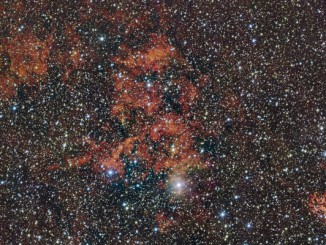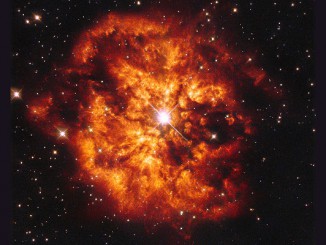
Hubble’s fireball
In this NASA/ESA Hubble Space Telescope image we see the central Wolf-Rayet star known as Hen 2-427 — more commonly known as WR 124 — surrounded by the nebula M1-67. Both objects are found in the constellation of Sagitta some 15,000 light-years away. The hot clumps of gas ejected by the star into space are travelling at over 150,000 kilometres per hour.





